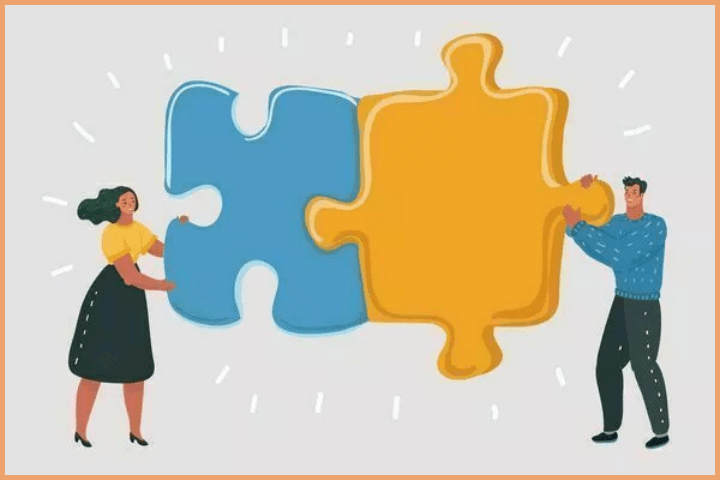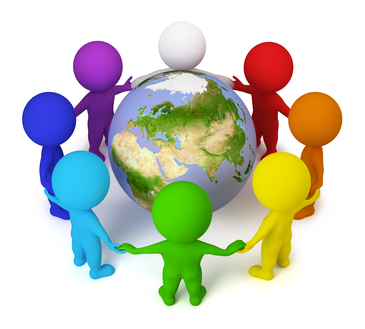Human relationships are a delicate balance of emotions, communication, and mutual understanding. At the heart of every connection lies the intricate interplay between the mind, body, and soul, influencing how we interact, bond, and grow together. Whether in romantic partnerships, friendships, or family ties, relationship dynamics shape the way individuals experience love, trust, and fulfillment.
This article explores the core elements that define relationship dynamics, from emotional connections and power balances to the evolving nature of modern relationships. By understanding these dynamics and actively nurturing them, individuals can build stronger, healthier, and more meaningful connections in all aspects of life.
The Mind-Body-Soul Connection
At the core of human existence lies the intricate interplay between the mind, body, and soul. These elements are deeply intertwined, each affecting the others in profound ways. The mind, in particular, serves as the foundation upon which our actions and experiences are built. Without a properly functioning mind, the human body would falter, unable to fulfill its potential.
The Pursuit of Pleasure
At its essence, the mind constantly seeks out pleasure and happiness. This innate drive underpins much of human behavior, compelling individuals to seek fulfillment in various aspects of their lives. In the context of relationships, this pursuit of pleasure often manifests in the desire for love, intimacy, and connection with a partner.
The Evolution of Relationships
Marriage, as an institution, is often entered into with the expectation of fulfillment in areas such as companionship, intimacy, and, yes, sexual gratification. However, over time, the initial excitement and novelty may wane, leading to a sense of boredom or dissatisfaction within the relationship.
Nurturing the Flame: Keeping Relationships Alive
To counteract the potential pitfalls of complacency and routine in a long-term relationship, it’s crucial for partners to continuously invest in one another. Beyond the physical aspects of intimacy, true fulfillment lies in the emotional connection and mutual support shared between partners.
What Are Relationship Dynamics?

Relationship dynamics define how individuals interact, communicate, and connect in various types of relationships, including romantic, familial, professional, and platonic. These patterns influence emotional bonds, trust, and overall relationship health. Understanding these dynamics allows individuals to build stronger, more fulfilling connections.
Why Relationship Dynamics Matter
Understanding relationship dynamics helps individuals recognize behavioral patterns, improve communication, and foster healthier connections. By addressing imbalances, strengthening trust, and prioritizing emotional well-being, relationships become more fulfilling and resilient.
Types of Relationship Dynamics
Relationships evolve through different dynamics, shaping how individuals interact, communicate, and respond to each other. These dynamics influence emotional well-being, relationship satisfaction, and long-term stability. Understanding them can help build healthier connections and prevent conflict.
1. Emotional-Based Dynamics
- Supportive Relationships – These relationships thrive on trust, emotional intimacy, and mutual care. Partners or friends feel secure, valued, and understood, leading to long-term satisfaction.
- Codependent Relationships – One person overly depends on the other for validation, self-worth, or emotional stability. This dynamic often results in an imbalance, making it difficult for both individuals to grow independently.
- Fear-Driven Relationships – When insecurities and past traumas dictate interactions, one partner may struggle with expressing emotions, while the other might react with frustration or detachment. Healing past wounds is essential in such cases.
2. Power-Based Dynamics
- Demand vs. Withdrawal – One partner persistently expresses needs or desires while the other avoids or resists them. Over time, this gap in communication can create tension. Open and honest discussions help balance this dynamic.

- Chaser vs. Distancer – One person seeks closeness and reassurance, while the other tends to pull away, often due to different attachment styles. Finding a middle ground strengthens emotional intimacy.
- Dominant vs. Submissive – In some relationships, one person takes control while the other follows. This dynamic may work if both partners consent to their roles, but it can turn toxic when one person’s needs are constantly overlooked.
3. Relationship Type Dynamics
- Romantic Relationships – Love, emotional connection, and physical intimacy define this dynamic. The strength of the relationship depends on trust, mutual respect, and open communication.
- Friendship Dynamics – Friendships range from deep emotional bonds to casual acquaintances. Healthy friendships are built on shared interests, trust, and support.
- Familial Relationships – Family connections involve parent-child bonds, sibling relationships, and extended family ties. These dynamics can shift over time based on life stages and experiences.
- Workplace Relationships – Interactions between colleagues, supervisors, and employees form professional relationships. Effective communication and mutual respect determine the health of these dynamics.
4. Commitment-Based Dynamics
- Casual Relationships – These involve minimal emotional investment and commitment, such as acquaintances or casual dating. While lighthearted, setting clear expectations is necessary to avoid misunderstandings.
- Long-Distance Relationships – Physical separation makes trust and communication essential. Maintaining emotional connection through consistent effort helps sustain the relationship.
- Open and Polyamorous Relationships – These non-monogamous arrangements require clear boundaries, strong communication, and mutual consent to function harmoniously.
5. Digital and Modern Relationship Dynamics
- Online Relationships – With social media, dating apps, and digital platforms, virtual connections have become common. Trust and authenticity play a major role in sustaining these interactions.
- Mentorship and Guidance-Based Relationships – Teacher-student or mentor-mentee relationships focus on knowledge-sharing and personal growth. The success of these relationships depends on respect, guidance, and mutual learning.
Understanding and Adapting to Relationship Dynamics
No two relationships are identical, and people may experience a mix of these dynamics throughout their lives. Recognizing these patterns allows individuals to improve communication, set boundaries, and build stronger, more fulfilling connections. By nurturing trust, emotional security, and open conversations, relationships can thrive regardless of their nature.
The Importance of Emotional Investment
In the quest for lasting happiness within a relationship, gestures of care, affection, and genuine interest hold significant sway. These acts not only nurture the bond between partners but also serve to keep the mind engaged and satisfied.
Guarding Against Temptation
When the needs of the mind are left unfulfilled within the confines of a relationship, the risk of seeking solace elsewhere becomes all too real. Secret love affairs and extramarital relationships often stem from a sense of emotional neglect or disillusionment within the primary partnership.
Strengthening the Foundation: Strategies for Success
To safeguard against the allure of external temptations, couples must prioritize open communication, mutual respect, and a willingness to adapt and grow together. By actively addressing the needs of both partners and fostering a culture of appreciation and support, the bond between them can flourish. Here’s how you can improve your relationship:

- Communicate Clearly – Express feelings openly and use “I feel” statements to avoid blame. Listen actively and validate emotions.
- Build Trust – Be reliable, keep promises, and show empathy to strengthen emotional security.
- Practice Kindness – Treat your partner with patience and appreciation, just as you would a close friend.
- Set Healthy Boundaries – Respect personal space and emotional needs to maintain balance.
- Resolve Conflicts Maturely – Avoid criticism or contempt. Use constructive discussions and take breaks if needed.
- Invest in Quality Time – Support each other’s goals and create meaningful rituals to strengthen your bond.
- Seek Help if Needed – Therapy or counseling can provide valuable guidance in overcoming challenges.
- Stay Patient and Adaptable – Relationships evolve, so embrace growth and work together toward a stronger connection.
Using these strategies can enhance your relationship, making it healthier and more fulfilling.
Cultivating Lasting Fulfillment
In the intricate tapestry of human relationships, the mind emerges as a powerful force, shaping the course of our emotional experiences and interpersonal connections. By delving into the nuances of the mind and its role in relationship dynamics, couples can chart a course toward lasting happiness and fulfillment grounded in mutual understanding, respect, and love.

